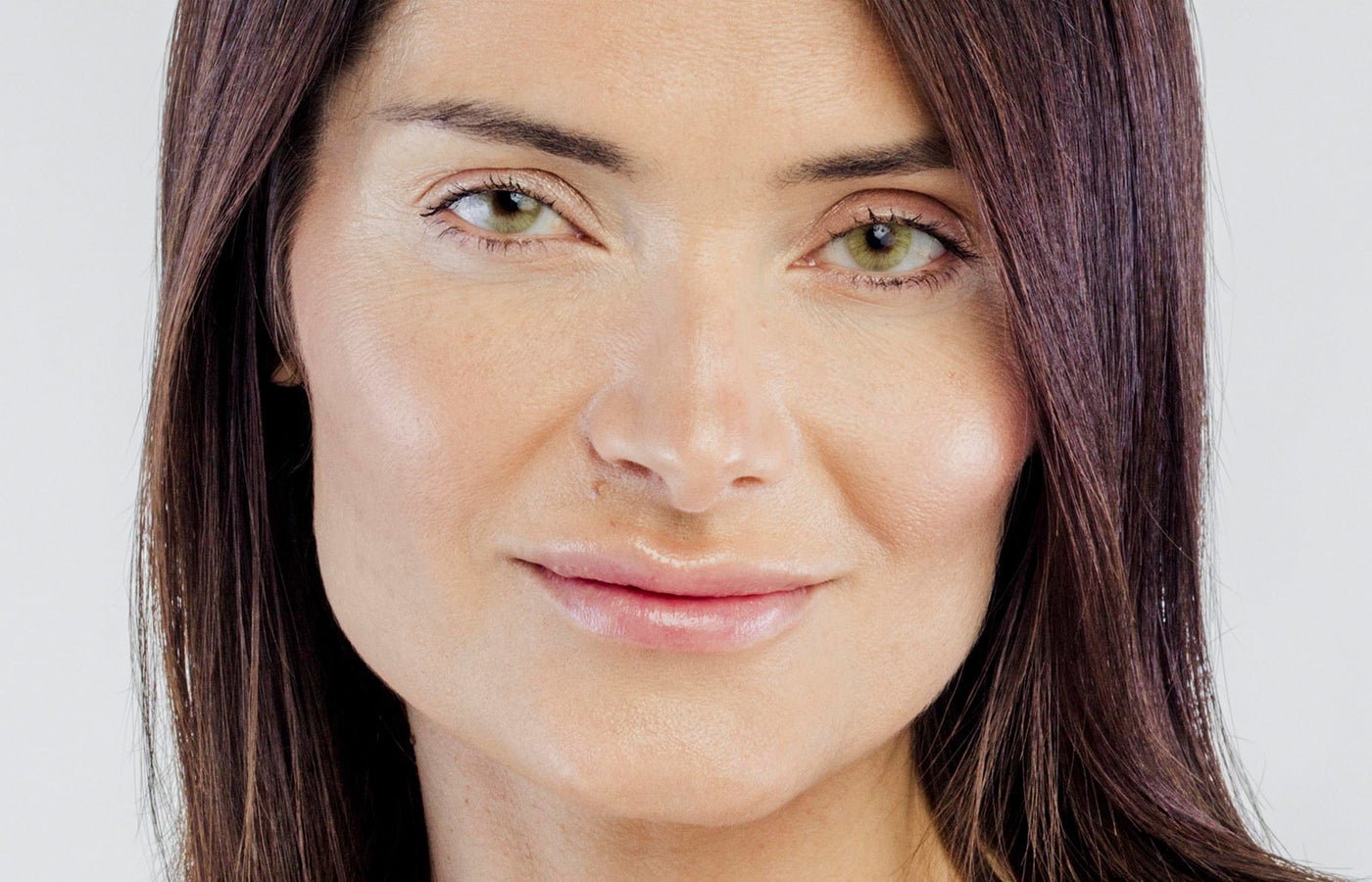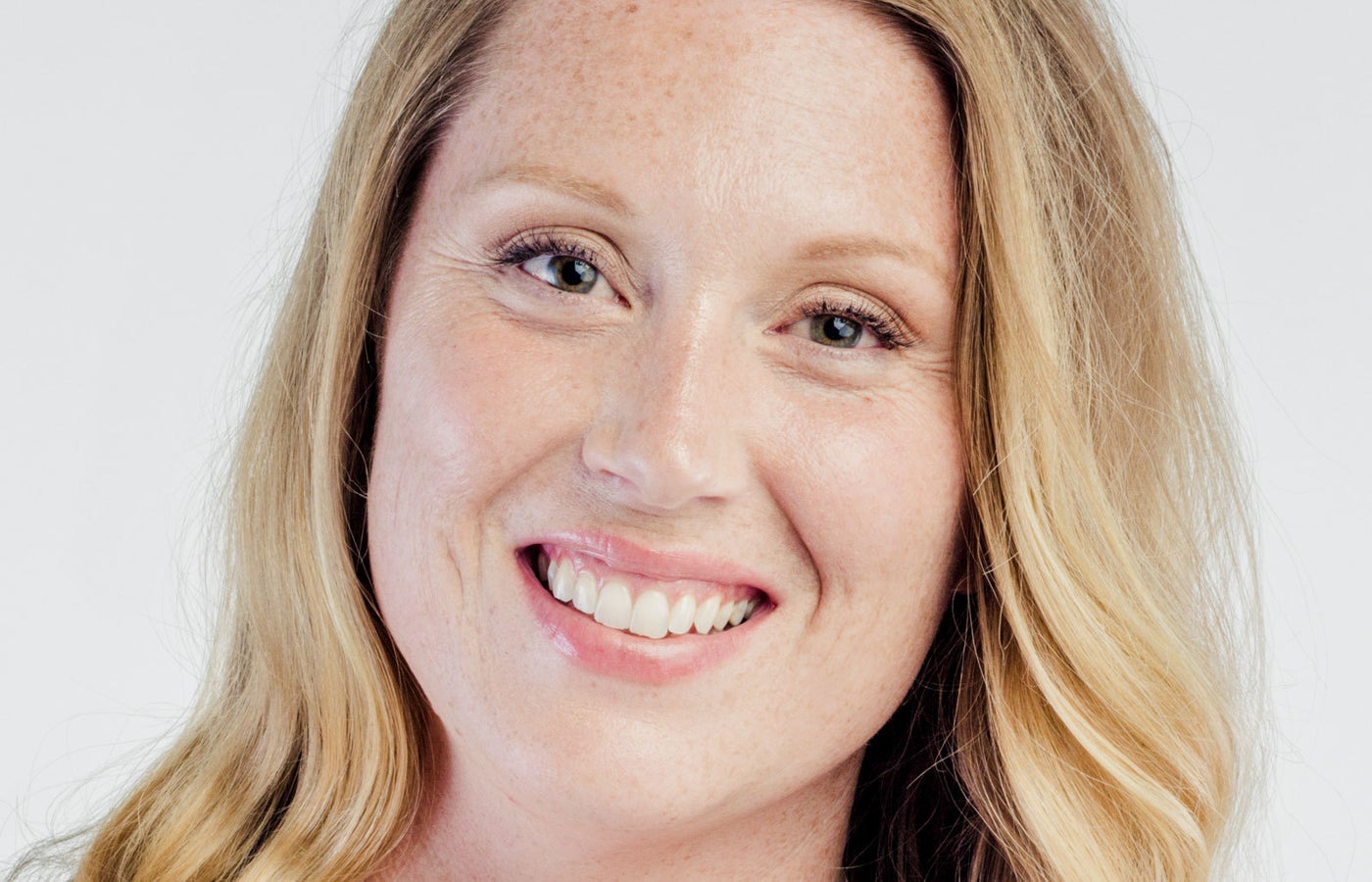The Halo hybrid fractional laser combines ablative and non-ablative wavelengths that simultaneously target the top layer of your skin and the deeper tissue underneath the surface, for a powerful skin rejuvenation treatment. It’s typically used on the face, neck, and décolletage, but it can also treat the arms, hands, and legs.
Suitable for patients of all skin tones, Halo is considered a second-generation laser—an improvement on earlier devices, which require more treatment sessions and more downtime to achieve the same type of results as one Halo treatment.
“By combining the two wavelengths, we minimize the healing time and maximize the results,” says Dr. Kris Reddy, a plastic surgeon in West Palm Beach, Florida. Your provider can dial up or down each wavelength, making it more or less aggressive, depending on your skin’s needs and the amount of downtime you can take.
Halo is a fractionated laser, so it breaks the light into many small beams that hit skin in tiny dots while leaving surrounding areas intact.
On the skin’s surface, it can treat a variety of skin concerns, including visible signs of aging and sun damage: hyperpigmentation and other types of discoloration, uneven skin tone, fine lines, and textural issues.
Simultaneously, it also heats the tissue below the surface to trigger the body’s natural healing response, stimulating new collagen production for firmer, smoother skin over time. While this can improve mild laxity, Halo is not intended to treat deep wrinkles or tighten skin.
Pros
- You get the benefits of both a non-ablative and ablative laser in a single treatment, improving both the epidermal and dermal layers of the skin.
- It comes with less downtime than other lasers with comparable results. You will have some redness and swelling for a few days, but many patients take only one day off from work—much less than the week of downtime after the most well-known fractional laser treatment, Fraxel.
- You’ll see initial results—a youthful glow and more even skin—in as few as five to seven days.
- The long-term results can last years (with good skin care and sun protection).
- Halo’s settings are highly customizable, making it one of the safest laser treatments for dark skin. It’s also the laser of choice for treating melasma and other types of hyperpigmentation.
Cons
- The treatment itself should feel warm and prickly—thanks to numbing cream—but you should be prepared for some pain afterward. “I immediately was uncomfortable and was driving home with ice packs on my face. It was like I put my face in a hot oven,” says RealSelf member seger26. “The first few hours were not fun.”
- While the downtime is considered minimal among laser treatments, your skin will be visibly red, swollen, and flaky for up to a week. Your normal activities won’t be too limited, but you’ll probably want to stay home.
- A small number of patients have significant swelling in the first few days after treatment. It usually resolves within a week.
- Average Cost:
- $1,731
- Range:
- $1,200 - $3,000
The price you pay for a Halo treatment will depend on your provider’s level of experience, their practice location, how many areas you have treated, and a few other key factors.
You can finance your treatment with CareCredit.
The Halo laser photos in our gallery have been shared by the provider who performed the procedure, with the patient's consent.
As you anticipate your Halo laser appointment, here’s how you can help minimize the risks and maximize your results.
Starting two weeks in advance:
- Avoid sun exposure and any kind of tanning, including self- or spray tanning.
- Don’t wax, tweeze, or use hair-removal creams on the treatment area
- If you’re prone to cold sores, you may be given anti-viral medication to reduce the risk of an outbreak
One week prior:
- Stop using skincare products with active ingredients like retinol, hydroquinone, glycolic acid, salicylic acid, or benzoyl peroxide for seven days before treatment
Before you head to your appointment, make sure your skin is free of lotion or make-up.
If you have any other concerns about prepping for your treatment, ask your provider during your consultation.
A treatment typically takes 20 to 60 minutes, depending on the size of the area you’re treating. While individual treatment plans and techniques can differ, here’s the general rundown of the experience:
- First, your physician first applies a topical anesthetic to the treatment areas.
- Once your skin is fully numb (which can take up to an hour), you’ll put on protective eyewear.
- Then your doctor begins the treatment, moving the Halo handpiece across the treatment area and delivering both wavelengths at once.
- You’ll feel heat and a prickling sensation. Some say it can be a bit painful, like rubber bands snapping against your skin, but the device blows cool air to help reduce discomfort and soothe inflammation during the procedure. In a 2018 multicenter study funded by Sciton, the manufacturer, patients rated the pain a 4 on a scale of 1–10.
- Finally, your doctor will likely apply an occlusive moisturizer post-procedure, to keep your skin moist and protected as you heal.
Healing time after Halo laser treatment can range from just a few days to a full week, depending on the intensity of your treatment and how your skin reacts.
After a Halo treatment, your skin will continue to feel the heat, especially during the first few hours. Ice packs can help soothe the stinging sensation.
You won’t see much of a difference the first day, but you can expect the following in the immediate days post-treatment:
- Peeling, flaking, itching, swelling, redness, and bronzing will occur the next day as your skin begins to heal.
- Any brown spots on your skin may become darker too.
- These symptoms usually peak in two to three days and subside within a week.
Some doctors say the swelling is a good sign that the treatment is working. “Generally, the patients who have a more significant inflammatory response will actually end up with more significant collagen stimulation, [greater] improvement to elasticity, and a better overall result,” says Dr. Sue Ellen Cox, a dermatologic surgeon in Chapel Hill, North Carolina.
Dr. Cox recommends contacting your doctor if you’re concerned or if the swelling lasts more than five days.
You can help decrease swelling and other inflammatory responses sooner by doing the following during your healing process:
- Avoid salty foods.
- Keep your head elevated (prop it up with pillows while you sleep).
- Take an antihistamine.
- Avoid excessive use of ice, as it may actually contribute to swelling.
- Avoid direct sun exposure and vigorous activity.
- Keep your skin-care regimen stripped down to a gentle cleanser, simple moisturizer, and physical sunscreen (with minerals like titanium dioxide or zinc oxide).
- Makeup can be applied once the peeling stops.
You’ll see Halo results in two phases, because the Halo laser delivers two different wavelengths of light.
“Short-term results [appear] within five to seven days,” explains Jericho, New York, plastic surgeon Dr. Kaveh Alizadeh. “Longer-term results appear over six to eight weeks, as you begin to see improvements in the texture of your skin and pores.”
You can exfoliate a week after your Halo laser treatment, once your skin has healed.
Prior to that, exfoliating (or picking, scrubbing, or rubbing) your skin could lead to complications like scarring or pigmentation changes.
Instead, wash the skin with a gentle cleanser each day, and allow any peeling or flaking to come off naturally.
Like all laser treatments, Halo carries risks of burning, blistering, scarring, and infection.
The risk of burning and scarring is higher for dark skin, which may also be at risk of hypo- or hyperpigmentation. However, doctors on RealSelf say Halo is still the best laser option for all skin tones.
“Halo is the safest type of laser for dark skin because the settings can be customized for your skin type. Ablation can be reduced to a smaller fraction of the face and shallower depth,” says San Francisco physician Dr. Jake Wardwell. “Halo has been studied and shown to be safe for all skin types, and it is the laser of choice for treating conditions that have a higher risk of hyperpigmentation, such as melasma or post-inflammatory hyperpigmentation, without risking making it worse.”
To help ensure a good outcome, find a provider who regularly performs the treatment and has a track record of positive Halo reviews.
How long Halo laser treatment results last varies from person to person, but the typical timeline is one to two years.
You can help prolong your results by practicing smart sun behavior: apply sunscreen with at least SPF 30 every day, wear a hat, and try to stay out of the sun during peak hours. An anti-aging skin-care regimen can also help.
Dr. Reddy says there is currently no laser out there that can replicate the effects of the Halo. The closest you can get in terms of results will require more treatments or extended downtime.
Other laser options include the following:
- If you want a laser with zero to minimal downtime, both Laser Genesis and Clear + Brilliant can improve pore size, fade pigmentation, and soften fine lines, without any recovery time. That said, patients with severe wrinkles or acne scars won’t see a significant improvement, and it will take a series of three to six "microlaser peels" to deliver similar results to one Halo treatment.
- CO2 laser is a more aggressive laser resurfacing option, so it comes with several more days of downtime. That said, CO2 lasers can effectively treat a variety of skin concerns and provide more drastic results than many other treatments.
- Other alternatives include radiofrequency (RF) microneedling treatments, such as Vivace and Potenza, which stimulate collagen in the deeper layers of skin to treat wrinkles, acne scars, uneven texture, sunspots, and rosacea. However, it’s likely that you’ll have less dramatic results than those of resurfacing lasers, and they require more treatments to get good results.
- Chemical peels, which use an acidic solution to remove damaged top layers of skin and speed up cell turnover, can also drastically improve the skin’s appearance. Chemical peels range from superficial to deep, so the intensity can be customized according to your skin type and concerns.








